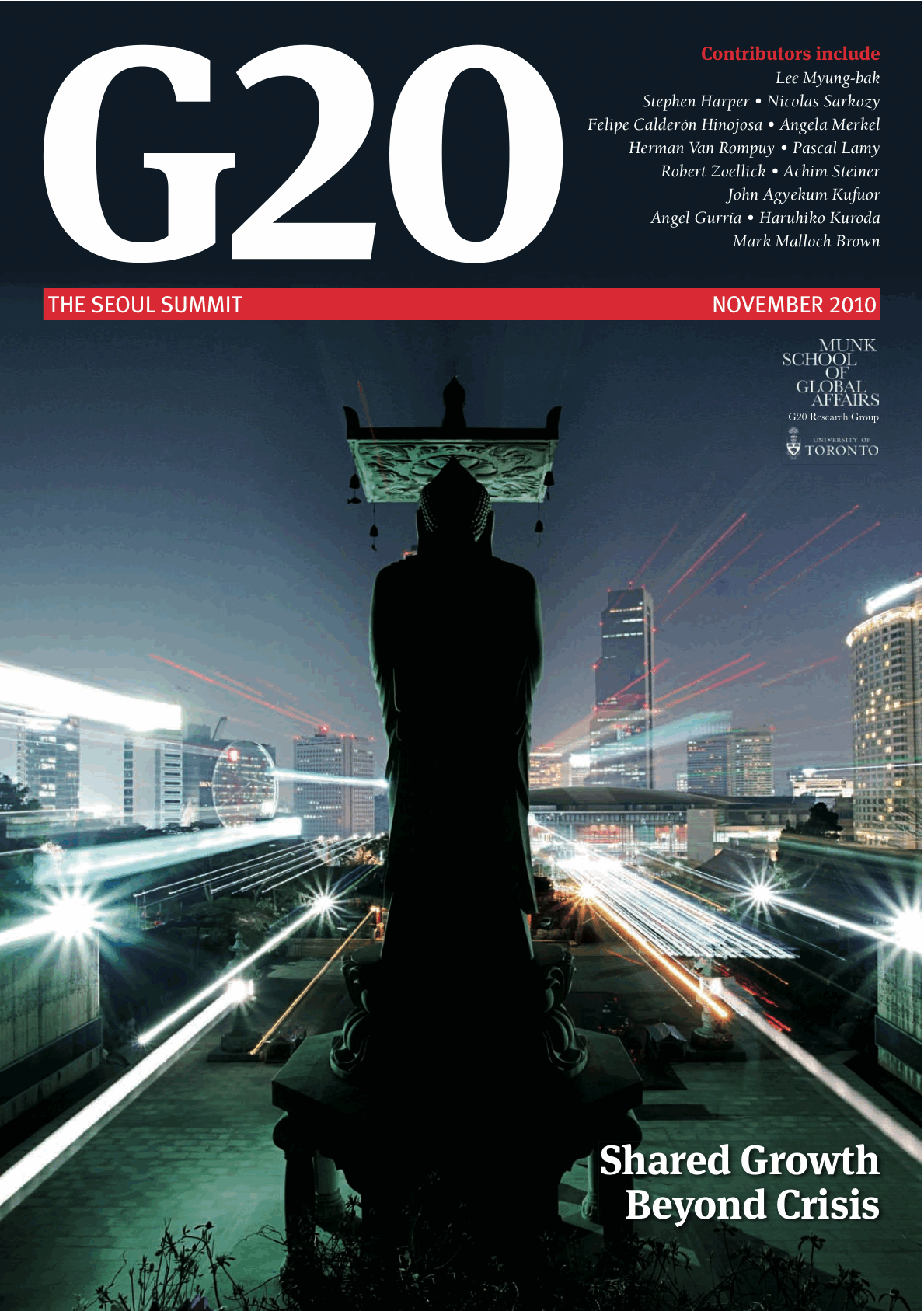

 |
 |
|

East Asian financial integration in a post-crisis world: prospects and challenges
By Surin Pitsuwan, secretary general, Association of Southeast Asian Nations
In order for East Asia to integrate financially into a recovering, but still fragile, global economy it must remain flexible, particularly in adapting to new financial stability frameworks and financial architecture reforms
To download a low-resolution pdf, click here. (Be patient! It's 50 MB.)
Despite East Asia’s remarkable contribution to the ongoing recovery, sustaining the post-crisis recovery in the region will not be easy. The global economy is still fragile. Across the globe risks remain considerable. Unemployment, especially in advanced economies, is rising, while in emerging markets, risks from the resurgence of capital flows have started to resurface. Perhaps one key lesson from this crisis is the need to manage external shocks and policy spill-over in an era of increased financial globalisation. Some critics have argued that the recent crisis has been caused by financial integration. While there is some truth in this, the transmission of shocks in today’s interdependent world cannot be avoided. Financial integration is a natural progression of that global interdependence. In the case of the recent crisis, the failure of financial supervision and regulation triggered the crisis, not financial integration. In fact, financial integration is vital to post-crisis recovery. Through it, countries can take advantage of additional savings generated by financial flows, thus adding to investment. Integration allows greater diversification, leading to deeper and more complete markets. Integration can also lead to deeper financial markets and increased resilience to external shocks.
Over the years, financial integration in East Asia has been increasing. Since the Asian financial crisis in 1997-98, cross-country interbank rate differentials between selected East Asian economies and the US dropped considerably after 1999. Similarly, government bond yield spreads over benchmark US treasury bonds have increasingly converged since then. Bilateral correlations of equity price indices across markets have also risen over the past decade. To be sure, the convergence of bond yields and overnight rates, as well as increased bilateral correlations of equity prices, indicate financial integration with regional markets. Several factors explain this increased convergence, including the increased opening of capital markets in East Asian economies, improved financial market infrastructure and significant differences in exchange rate and credit risks.
Among the members of the Association of Southeast Asian Nations (ASEAN), financial integration is also moving ahead. Although progress is more muted, the region is aware that to establish an integrated ASEAN Economic Community (AEC), well-functioning financial and capital markets must exist. In fact, many successful initiatives are already underway, under the ‘Roadmap for Monetary and Financial Integration of ASEAN’.
ASEAN is committed to liberalising financial services by 2015, covering all sub-sectors and modes, except for those with pre-agreed flexibilities. Four rounds of negotiations have so far been concluded, with binding commitments by each ASEAN country to liberalise its financial services regime. The fifth round of negotiations is expected to be concluded by the end of 2010.
ASEAN has also ensured that well-functioning capital markets exist to support the region’s economic integration. The objective is to build capacity and lay the long-term infrastructure for the development of ASEAN capital markets in order to achieve cross-border collaboration among the various capital markets. ASEAN’s ‘Medium-Term Strategic Framework’ has been adopted to guide the Working Committee on Capital Market Development and to align capital market development to the AEC Blue Print. The committee currently focuses on enhancing market access and liquidity through such initiatives as ASEAN Exchanges linkages and bond markets linkages and on promoting comparability between domestic and international credit rating agencies.
To support an integrated capital market in the region, the ‘Implementation Plan to Promote Integrated Capital Markets’ was developed in 2009, with clear milestones and core strategies for deepening the region’s capital markets. The integration of capital markets will be undertaken through the mutual recognition and harmonisation of standards for cross-issuance, the building of infrastructure for cross-border trading and market liquidity, the promotion of new products and market intermediaries, and the relaxation of regulations that restrain the role of institutional investors. Currently progress has been constrained by large differences in levels of development, including differences in regulatory standards and fragmented infrastructure. The plan is thus intended to provide a coherent approach to capital market integration in the region.
ASEAN also recognises that increasing financial integration at the regional and global levels brings with it the challenge of further liberalising cross-border capital flows. So far, efforts have been encouraging, but more is needed. Among the key priorities are the maintenance of exchange rate flexibility and removal of restrictions on purchases of foreign exchange for current account transactions. Over the longer term, further liberalisation of restrictions on outflows (of both foreign direct and portfolio investment) can also support deeper integration and potentially offset swings in capital inflows.
ASEAN is looking at intensifying exchange rate cooperation as part of its overall strategy of regional financial integration. Under the ASEAN currency cooperation, members explore ways to further facilitate intra-regional trade and investment and economic integration, including through some forms of currency arrangements. As preconditions for closer currency cooperation, efforts have been made to maintain appropriate macroeconomic policies and foster greater macroeconomic convergence.
Within the broader context of ASEAN+3 cooperation, two regional initiatives hold much promise for the region’s financial integration: the Chiang Mai Initiative Multilateralization (CMIM) and the Asian Regional Bond Markets Initiative (ABMI).
The $120 billion CMIM plays an important role in providing financial insurance at the regional level. Launched in March 2010, it is the most concrete proof of regional cooperation among ASEAN+3 countries. Countries have pledged their reserves to provide an insurance-like facility that offers liquidity support on very short notice in the case of a crisis. By pooling reserves and risks, this regional financing arrangement can help mitigate external shocks that hit an individual economy and create confidence in the availability of dollar liquidity in the region.
To support the CMIM, the ASEAN+3 Macroeconomic and Research Office being opened in Singapore will conduct economic monitoring in ASEAN+3 countries to facilitate the prompt activation of the mechanism. During non-crisis periods, the office will undertake comprehensive macroeconomic assessments in the region and identify emerging vulnerabilities through rigorous country consultations and early warning systems. In times of crisis, the office will assume a more crucial role in supporting the collective decision-making process prior to any disbursement of funds as well as in monitoring the use and impact of any disbursed funds.
A real test of how far the region can go can be seen in how deep and liquid local capital markets become. Since 2003 the region has had an active and growing interest in developing bond markets denominated in local currencies and creating more accessible and well-functioning regional bond markets both for issuers and investors under the ABMI.
The ABMI Roadmap has been in place since 2008 to examine all issues related to the initiative and consequently to achieve its objectives. Four key areas are to be addressed: promoting the issuance of localcurrency-denominated bonds; facilitating the demand for such bonds; improving the regulatory framework; and, improving the related infrastructure for the bond markets. One important, concrete result of the ABMI is the Credit Guarantee and Investment Facility. This $700 million trust fund will guarantee bonds issued by Asian companies, thus facilitating corporate bond issuance and reducing funding costs. It is expected to be operational by the end of 2010.
Despite the encouraging trends, while East Asian financial integration has been rising, it remains limited. Many studies show that East Asia has integrated more fully with global financial markets than within the region. East Asian equity markets track the US markets more closely, although the extent of linkages appear weak. This seems to have been confirmed in East Asia following the global financial deleveraging in 2008. As the global crisis intensified in September 2008, equity prices in East Asia plunged, triggering substantial portfolio outflows from the region.
Thus more efforts are needed. Given increasing global demands, the region must make sure that the necessary policies and infrastructure remain in place so that East Asia is ready to manage the increasing complexity of financial globalisation. How can regional financial integration in East Asia be enhanced?
The immediate challenge is to keep regional economic integration on track. Coping with globalisation and harnessing the benefits it can deliver will be critical. The experiences of Europe and North America suggest that trade integration can anchor closer financial integration. As trade barriers continue to be removed, firms will likely increase flows in foreign direct investment (FDI) and other financial flows into the region. Consequently, larger FDI flows can lead to a strengthening of domestic financial markets through greater domestic borrowing. So far, the establishment of the AEC by 2015 may well trigger the deepening of regional financial integration, not only in terms of capital and financial flows, but also in terms of the flow of services, especially financial services. Given the connection between trade and financial integration, policies that support both trade and financial liberalisation must be seriously pursued.
Another challenge is for the region to remain committed to financial sector reforms. It is already doing much in this area. But given the need to deepen domestic markets, domestic financial policies must be adequately enhanced. Efforts should focus on areas that can establish a liquid and well-functioning market for government and corporate debt. These include priorities such as developing regional benchmark instruments, creating broader and deeper bond and derivatives markets, and establishing regionally recognised credit rating agencies. In addition, there is a need to focus on other critical financial policies related to corporate governance, investor rights and credit information.
Finally, the challenge is for East Asia to remain flexible, particularly in adapting to new financial stability frameworks and financial architecture reforms. While this is more of a long-term response, East Asia must include among its priorities greater financial regulatory reforms and enhanced surveillance and policy coordination.
To sum up, the best possible strategy to spur financial integration is to remain committed to reforms. There are huge opportunities and possibilities for East Asia to achieve financial integration. But these require unwavering commitment and political will, especially in a post-crisis world.
|
This Information System is provided by the University of Toronto Library |
All contents copyright © 2024. University of Toronto unless otherwise stated. All rights reserved.